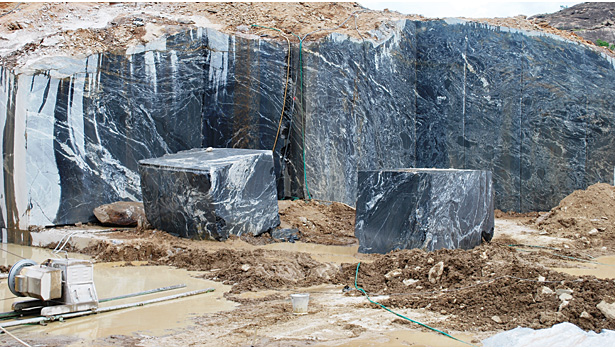Journeying With Granite Quarries in South Africa: A Visual Odyssey
Journeying With Granite Quarries in South Africa: A Visual Odyssey
Blog Article
Uncovering the Rich Background and Sustainable Practices of Granite Quarrying
As we stand on the precipice of uncovering the intricate tapestry of granite quarrying, a journey with time reveals not just the physical act of drawing out rock however likewise the social and historic value woven into the really material of this practice. From the ancient origins that laid the foundation for contemporary quarrying techniques to the lasting methods that are forming the future of this sector, each chisel mark on granite surface areas narrates waiting to be uncovered (granite quarries in south africa). The legacy of granite quarrying stretches far beyond plain extraction; it is a testimony to human resourcefulness, strength, and the long-lasting allure of this stunning rock
Old Beginnings of Granite Quarrying
Going back to old civilizations, the technique of quarrying granite has been an integral component of human history and building development. The earliest evidence of granite quarrying go back to ancient Egypt, where massive pyramids and detailed sculptures were crafted from this sturdy rock. The Egyptians used primitive tools to remove granite blocks from quarries, showcasing the relevance of this material in their huge buildings.
Progressing in background, the Greeks also made considerable payments to the quarrying of granite. The Greeks utilized granite in numerous building wonders, such as temples and statues, demonstrating their ability in shaping and carving this hardy rock. The Romans additionally improved the techniques of quarrying granite, utilizing sophisticated tools like blades and hammers to remove and shape granite for their iconic structures.
Through the centuries, the technique of quarrying granite has actually progressed, with contemporary innovations boosting performance while preserving the ageless allure of this natural rock - granite quarries in south africa. From ancient human beings to contemporary contractors, the heritage of granite quarrying remains to shape our world
Evolution of Quarrying Techniques
The advancement of quarrying techniques has actually been marked by a constant progression in the direction of higher efficiency and accuracy in drawing out granite. Early quarrying strategies included manual labor with fundamental devices such as knives, hammers, and wedges to extract granite blocks from the earth.
In even more recent times, the advent of equipment revolutionized the quarrying market, allowing quicker extraction rates and increased performance. Technologies such as ruby cable saws, high-pressure water jets, and pneumatically-driven drills have ended up being conventional in modern-day quarries, enabling exact cutting and lowered waste. Innovations in computer-controlled equipment and 3D modeling have maximized quarrying procedures, leading to marginal environmental effect and boosted sustainability methods. As the need for granite proceeds to rise, the advancement of quarrying strategies stays indispensable to meeting market needs successfully and sustainably.
Cultural Value of Granite
Granite holds a profound cultural value across different people because of its enduring visibility in architectural masterpieces and revered monuments. From the stunning pyramids of Egypt to the complex makings of the Angkor Wat temple in Cambodia, granite has actually been a product of option for expressing grandeur and durability in cultural heritage. In ancient Rome, granite columns decorated temples and public buildings, symbolizing toughness and permanence. The Click Here cultural significance of granite expands beyond its physical characteristics; it symbolizes strength, security, and timelessness, making it a sign of sustaining heritages and traditions.

Sustainable Practices in Quarrying
In the middle of the rich history of granite quarrying and its social relevance exists a growing focus on lasting techniques within the industry. As environmental understanding and concerns concerning resource exhaustion have increased internationally, the quarrying field has actually progressively accepted sustainable approaches to decrease its influence on the setting and surrounding neighborhoods.

In addition, reclamation and rehabilitation of quarry sites post-extraction are essential to lasting practices. By bring back quarried areas to an all-natural or beneficial state, such as producing wild animals habitats or entertainment spaces, quarriers can balance out the ecological impact of their operations and add positively to the regional environment.
Heritage of Granite Quarrying
With a historical backdrop steeped in craftsmanship and commercial development, what withstanding impact has granite quarrying left on the landscape of modern society? The heritage of granite quarrying transcends plain removal methods; it has actually shaped building marvels, metropolitan landscapes, and site here cultural heritage worldwide. The long lasting nature of granite has made it a more information preferred selection for monoliths, structures, and infrastructure, standing as a testimony to the skill and virtuosity of quarry workers throughout generations.
In addition, the financial impact of granite quarrying can not be forgotten. The industry remains to provide employment possibilities and drive regional economies in areas where granite removal is widespread. It has additionally spurred technological innovations in quarrying strategies and tools, resulting in more reliable and lasting methods.
In terms of sustainability, the tradition of granite quarrying consists of initiatives to reduce environmental influences with reclamation jobs and liable resource monitoring. By stabilizing economic passions with environmental stewardship, the market makes every effort to make sure that future generations can continue to gain from this long-lasting all-natural source.
Conclusion

Report this page